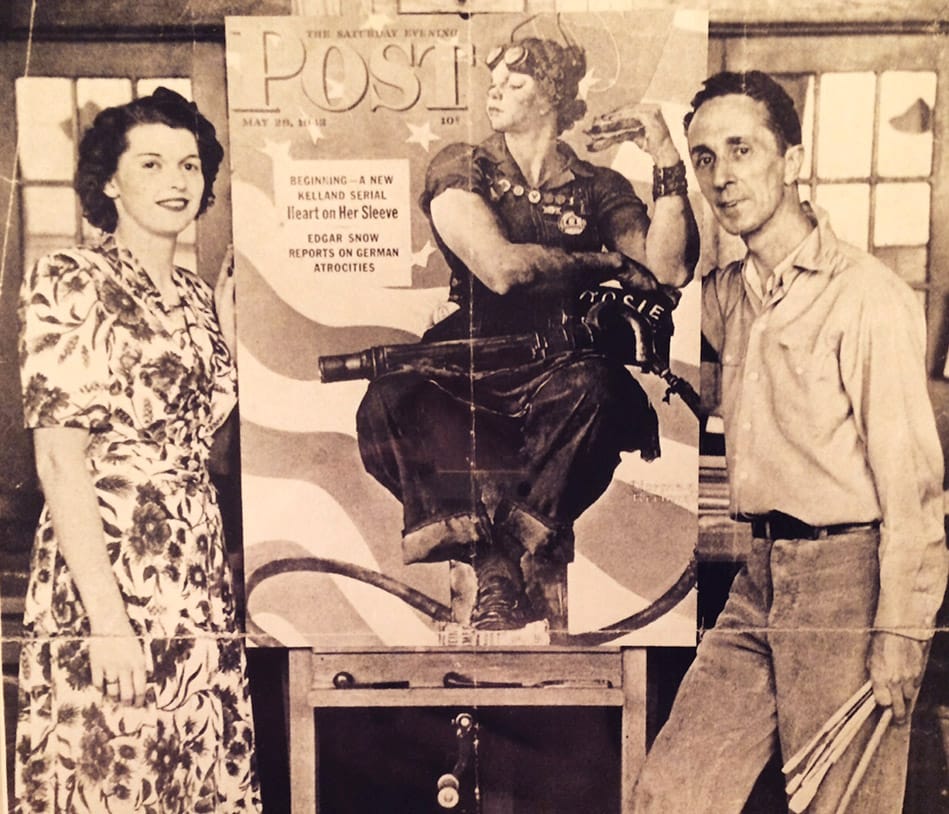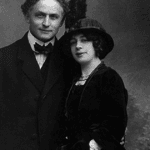Picture this: in the midst of a global conflict, a woman steps into the spotlight, her image forever etched in the annals of history. Rosie the Riveter, a symbol of American fortitude, emerged from Norman Rockwell’s masterpiece and became an emblem of women’s newfound strength and determination during World War II. Her story is more than just a captivating image; it’s a testament to the resilient spirit that carried a nation through its darkest days. Join us as we uncover the origins, impact, and enduring legacy of Rosie the Riveter, an icon that continues to inspire generations with its message of empowerment.
The Woman Behind the Icon
We all know her – that strong woman with the flexed bicep and determined look on her face. Yep, that’s Rosie the Riveter, the iconic image forever tied to Norman Rockwell’s famous painting. But Rosie is much more than just a pretty picture. She’s a symbol of women’s power, courage, and dedication during World War II, and her influence is still felt today.
A Real-Life Rosie
You might be surprised to learn that Rockwell’s “Rosie” was actually inspired by a real woman! Her name was Mary Doyle Keefe, and she worked as a telephone operator in Vermont. Rockwell saw something special in Keefe’s strong build and determined spirit, and he used her as the basis for his now-famous depiction of a female factory worker. Keefe herself once said, “I didn’t expect anything like this, but as the years went on, I realized that the painting was famous.”
From Magazine Cover to Cultural Phenomenon
Rockwell’s “Rosie” first appeared on the cover of the Saturday Evening Post, a popular magazine at the time. People immediately connected with the image of this strong, capable woman, and it wasn’t long before “Rosie the Riveter” became a symbol of the vital role women played on the home front during the war. This wasn’t just art; it was a powerful message that resonated with millions.
Breaking Barriers and Building Strength
“Rosie the Riveter” challenged the traditional idea of what women could do. Here she was, working in a factory, a job typically done by men, and doing it with confidence and skill. This powerful image helped break down barriers and showed the world that women were strong, capable, and ready to contribute to their country in meaningful ways.
Rosie’s Legacy Lives On
Even though World War II ended decades ago, “Rosie the Riveter” continues to inspire. She reminds us of the progress women have made in the fight for equality, especially in fields that were once dominated by men. However, Rosie also reminds us that the fight isn’t over, and there’s still work to be done to ensure that women have equal opportunities in all aspects of life.
More Than Just a Painting
It’s important to remember that Rockwell’s “Rosie” wasn’t just a painting; it was a powerful piece of propaganda. During the war, the government used images like “Rosie” to encourage women to join the workforce and support the war effort. And it worked! “Rosie the Riveter” became a rallying cry, showing women that they were vital to their country’s success.
Unpacking the Symbolism of Rosie the Riveter
Norman Rockwell’s Rosie the Riveter isn’t just a pretty picture; she’s a powerful symbol of how capable women are, especially during tough times. See, back in World War II, tons of men were off fighting, which meant that women had to step up and keep things running back home. That’s where women like Rosie came in. They traded in their aprons for overalls and took on jobs that were traditionally considered “men’s work,” like building planes and ships.
Rockwell’s Rosie, with her trusty rivet gun and those awesome flexed biceps, shows us that women were more than up for the challenge. She isn’t afraid of hard work! But it’s more than just physical strength; Rosie also embodies the incredible determination and grit that women showed during those uncertain times. They faced challenges head-on, kept the home fires burning, and proved they were capable of anything.
What’s truly amazing is that Rosie’s impact didn’t end with the war. Over the years, she’s become this iconic symbol of women’s rights and equality. Think about it: Rosie represents breaking down stereotypes, fighting for equal opportunities, and showing the world that women can achieve incredible things if given the chance. It’s no wonder her image continues to inspire women today to chase their dreams, challenge the status quo, and fight for a more just and equitable world.
Who Really Painted Rosie the Riveter?
Norman Rockwell’s famous “Rosie the Riveter” painting graced the cover of The Saturday Evening Post on May 29, 1943, cementing itself in American history. But here’s the thing: Rockwell’s Rosie wasn’t the first to capture the nation’s attention. Before Rockwell’s iconic image, there was another Rosie, created by J. Howard Miller. Miller’s “We Can Do It!” poster, featuring a different Rosie altogether, was initially intended to boost morale within factories, not to become a cultural phenomenon. It was only later that Miller’s Rosie gained widespread recognition and became synonymous with female empowerment.
Key Takeaways:
- Get this: Rockwell’s “Rosie the Riveter” was probably inspired by the art of Michelangelo!
- There’s been a lot of back and forth about who exactly modeled for Rockwell’s painting, adding a whole layer of mystery to the artwork.
- No matter who inspired her, “Rosie the Riveter” has become a powerful symbol of female strength and resilience, particularly for women in the workforce.
- The image of Rosie has transcended its wartime origins, popping up in various forms to support different causes over the years.
The Size and Significance of Rockwell’s Masterpiece
You might be surprised to learn that Norman Rockwell’s “Rosie the Riveter” isn’t actually a gigantic painting. It measures 52 inches high by 40 inches wide. That’s definitely bigger than your average poster, but smaller than, say, a door. What’s interesting is that even though it’s not a huge painting, Rockwell’s “Rosie” feels larger than life, and that’s a testament to how powerful the image itself is. Imagine standing in front of it—it would still likely take your breath away even if you knew the exact dimensions beforehand.
Why Size Matters
It’s easy to get caught up in the details when we talk about art, but thinking about the size of a piece like this can give us clues about the artist’s intentions and how the art was meant to be experienced. Some experts believe that Rockwell chose this specific size for “Rosie” to make her feel both relatable and strong at the same time. She’s not so large that she feels distant or untouchable, but she’s also not so small that her strength is diminished. He fills the canvas with her presence – her work boots firmly planted, her lunch pail stamped “Rosie,” and of course, that iconic bicep. It’s as if she’s challenging the viewer, saying, “Yeah, I’m a woman, and what?”
More Than Just Measurements: The Legacy of an Icon
When we talk about “Rosie the Riveter,” we’re not just talking about the physical canvas and its measurements. We’re talking about an image that has transcended the art world to become a cultural phenomenon. “Rosie” represents so much more than just a woman doing a job—she’s a symbol of female empowerment, resilience, and the contributions of women during World War II. Her image has been reproduced countless times on everything from t-shirts to coffee mugs, but the original artwork still holds a special place in our collective imagination.
Even though we might not think about it consciously, the size of the original “Rosie the Riveter” plays a role in shaping how we view and understand this iconic image. While the original painting might not be massive, its impact on our culture certainly is.
Who Was the Real Rosie the Riveter?
So, we all know Rosie the Riveter – that tough-as-nails lady flexing her bicep on posters, with the slogan “We Can Do It!” She’s become a symbol of women’s power and resilience, especially during World War II. But have you ever wondered who the woman behind the iconic image was? Well, her name was Mary Doyle Keefe, a young woman from Vermont who was only 19 years old when she became the model for the now-famous image.
Interestingly, Keefe wasn’t a riveter herself. She was working as a telephone operator when the famous artist Norman Rockwell asked her to pose for him back in 1942. Rockwell’s painting, featuring Keefe as a strong, determined factory worker, was printed on the cover of the Saturday Evening Post in 1943 and quickly became a national sensation. While Rockwell might have taken some artistic liberties portraying Keefe as a riveter, his painting perfectly captured the spirit of the time – millions of women like Keefe were stepping up and filling traditionally male roles in factories and shipyards across the country while the men were away fighting in the war.
For decades, the true identity of Rockwell’s model remained a bit of a mystery. It wasn’t until the 1990s that Keefe came forward and revealed herself as the inspiration behind the image. Sadly, Keefe passed away in 2015 at the age of 92, but her legacy as the face of Rosie the Riveter continues to inspire women today. Her story is a powerful reminder that even ordinary people can become symbols of extraordinary strength and change.
Did you know that you can see Frank Sinatra’s arrest picture online? It’s a fascinating glimpse into the life of one of the most iconic singers of all time.
Did you know that Bess Houdini was a successful magician and illusionist in her own right? She was also a tireless advocate for her husband, Harry Houdini, and his legacy.
Are you interested in visiting the grave of Wyatt Earp? It’s located in the Boot Hill Cemetery in Tombstone, Arizona, and is a popular tourist destination for fans of the Wild West.
- Cerro Gordo County Sheriff’s Department: New Leadership, Jail Information, and Community Updates - November 22, 2024
- Fowlerville Community Schools: Your Guide to the New Elementary School, Programs, and 2024 Updates - November 22, 2024
- Henrico County Public Schools Calendar 2024-2025: Key Dates & Information - November 22, 2024














